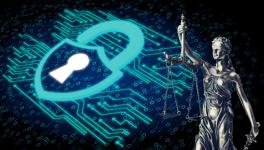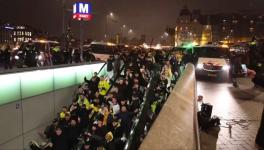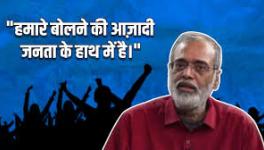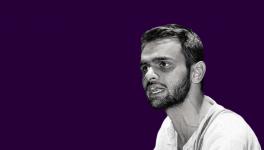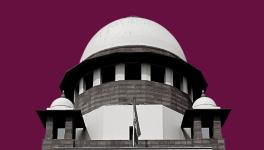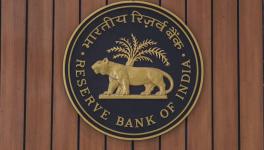3 Years of Delhi Violence: Citizens' Panel Calls out Delhi Police, Media for Facilitating Anti-Muslim Narrative

Security personnel walk past Bhagirathi Vihar area of the riot-affected northeast Delhi, February 26, 2020. Image Courtesy: PTI
New Delhi: Three years after the North East Delhi violence that broke out in February 2020, a Citizens committee presented a report on issues related to the violence, such as anti-Muslim narratives, anti-CAA (Citizenship Amendment Act) protests, the role of Delhi Police, and the accountability of Media, among others.
The committee members included former Supreme Court justice Madan B. Lokur, former justice A.P Shah, former justice RS Sodhi, former justice Anjana Prakash and former Home Secretary GK Pillai.
Organised into three parts, the report "examines different facets of the violence from its genesis, nature, and aftermath." It was released here on Friday.
The genesis of the violence could be traced back to the media narratives around anti-CAA protests in late 2019 and early 2020.
The analysis of the content of media channels by the committee "reveals that the channels' reportage of events surrounding the CAA framed the issues as "Hindus versus Muslims" with prejudice and suspicion against the Muslim community. These channels concentrated on vilifying anti-CAA protests, fanning unsubstantiated conspiracy theories, and calling for their forcible shutdown."
The violence broke out in North East Delhi after several BJP leaders, and Hindu nationalist figures gave calls for mobilisation against a group of anti-CAA women protesters in the Seelampur-Jaffrabad area. Specifically, BJP leader Kapil Mishra gave an ultimatum to the Delhi Police "to clear the roads in Jaffrabad and Chand Bagh" within three days. The first stone-pelting incident started shortly after his speech between pro-CAA and anti-CAA groups in Maujpur and Jaffrabad.
The committee notes that "the hateful content purveyed on February 22-23, 2020, was designed to incite, exhort and provoke actions of violence and these calls, thereby, appear to have acted as an immediate trigger to the break-out."
Following the stone-pelting incidents, mass violence broke out by the morning of February 24. While mobs on both sides attacked each other with stone pelting, arson, and gun violence, a major feature of the violence was the anti-Muslim hate.
"While mobs clashed and caused damage to each other, Muslim identity, ranging from individuals to homes, businesses, and places of worship, was targeted. This grim mix of targeted as well as generalised violence resulted in the death of 40 Muslims and 13 Hindus."
Furthermore, the committee concluded that the "deliberate shaping of a divisive Hindu-Muslim binary, in the months preceding, finally manifested in this communally charged violence."
In its concluding remarks, the committee remarked that the communal polarisation that heralded the violence "has been hardened by state responses to the violence.
It noted how the Delhi Police did not take "punitive measures against hate speech made by political leaders and others in the run-up to February 23 or on the day itself." Furthermore, there were also allegations of the police assisting mobs and participating "in attacks on Muslims, anti-CAA protest sites, and mosques."
The committee also evaluated the responses of the Union Ministry of Home Affairs, deeming them inadequate.
"Despite having command over both the Delhi Police and the Central paramilitary forces, the MHA failed to take effective steps to stem the spread of communal violence. Repeated assurances on February 24 and 25 by police top brass and government officials that the situation was under control did not match the visibility of violence on the ground. Though internal alerts circulated by the Delhi Police advised increased police deployment in North East Delhi on February 23 itself, official data shows that deployment rose only on February 27."
Similarly, per the committee, the Government of Delhi also did not do anything to mediate between the communities. While the Delhi government could not have controlled the violence as the police are under MHA, the committee felt that it could have performed the role of civic mediation and statesmanship to calm the situation. In the aftermath of the violence, "the Delhi Government has failed to ensure timely and adequate relief and compensation to those affected by violence."
Rather than looking at its failures to stop the violence, the Delhi Police went on a spree of arrests, alleging an "overarching premeditated conspiracy aimed at orchestrating communal riots."
Concerning the Delhi Police investigation, the committee concluded that its direction is skewed.
"It omits to examine the connections between the outbreak of the violence with the spate of hate speeches and calls for violence. It, incongruously, subjects anti-CAA protesters to a UAPA prosecution for allegedly committing violence which ultimately targeted Muslims and those protesting against the CAA. Only an impartial and rigorous investigation can shed light on the truth, ensure accountability, and do justice to the victims of the violence."
Furthermore, the committee also called for regulations on deeply harmful content on social media.
"Sections of the media play a key role in propagating hateful narratives, illustrated in small part through the study in the report. Their audience of daily watching households, as well as their social media presence, ensures that the hateful narratives reach a very wide number. Clearly, any oversight exerted by the existing broadcasting oversight bodies pales in proportion to the channels' reach and leeway. For all of its benefit as an unregulated space for speech and expression, this precise quality of social media presents serious dangers as a carrier of rampaging hate speech and violent content."
The whole episode, per the committee, has left communities depleted in their ability to heal and restore.
"The only way forward is for the state to act towards justice harbored in the conjoined practice of fraternity, equality and freedom."
Get the latest reports & analysis with people's perspective on Protests, movements & deep analytical videos, discussions of the current affairs in your Telegram app. Subscribe to NewsClick's Telegram channel & get Real-Time updates on stories, as they get published on our website.









